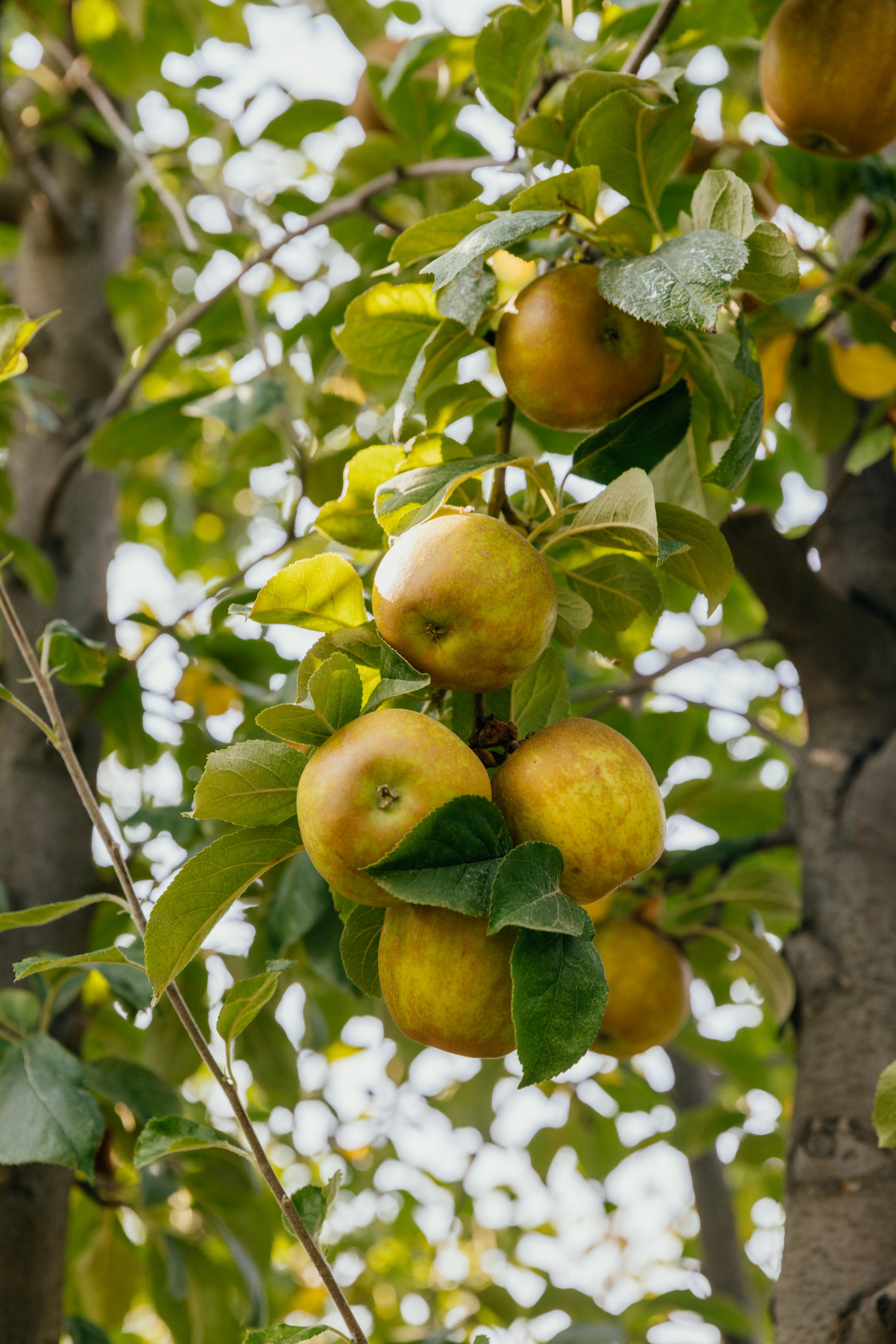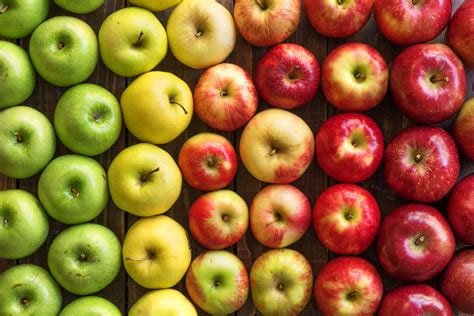Harvesting Wisdom: Make the Most of Apple Season
“In my travels around the world, I’ve quickly learned that few places grow apples as high quality and delicious as the Northwest,” shared OGC Buyer Jeff Fairchild. “The region’s cold winters give the trees a much-needed rest. Mild, extended springs support maximum cell growth, resulting in bigger apples. Warm, dry summers allow apples to grow without all the moisture, keeping mildew at bay. Cold nights in late September and October finish the apples with a full color, bringing out the sugar and flavors. If you love delicious apples, the Northwest is the apple mecca of the world!”
As fall begins, and the leaves change and the air turns crisp, take pride in offering the Northwest’s best organic apples. Beyond just selling apples, your produce department is sharing a piece of the region’s rich agricultural heritage, one that brings joy to shoppers and supports the hardworking organic growers who make it all possible.
A Bite of Apple History
Did you know there are at least 5,000 different apple varieties? Some sources say it might even be twice that. Apples, native to central Asia’s Tian Shan mountains, have been enjoyed for thousands of years. Nowadays, almost all apples are grafted onto dwarf rootstock, resulting in shorter trees making the fruit easier to harvest.
Apples are a high-grossing fruit category in the produce department, with 11.1 billion apples sold last year worldwide – conventional and organic - generating over $3 billion in revenue. While the U.S. is a big player, we’re not the biggest — China produces ten times more apples than the U.S.
Eaters can be choosy, with tastes trending toward sweeter apples with a fracturing texture – apples that crackle when bitten and explode with flavor and juice. Over the years, varieties like Red Delicious have gone from being a favorite to nearly forgotten. Newer varieties like Honeycrisp have sparked a trend toward sweeter, crunchier apples and proprietary varieties like Cosmic Crisp have shaken up the apple market with their popularity. At one time, there was the belief that every new and exciting variety would turn into extra sales. But there’s a limit to how many types of apples people can keep up with, and growers are finding that out the hard way.
Technology Today & Supporting Farms of All Sizes
Technology is changing the apple industry, with robotic picking, modern packing facilities and advanced storage methods becoming the norm. In the next decade, more than 75% of apples will likely be harvested by robots, which could save growers money and reduce their reliance on increasingly scarce labor. But what happens to the 20–50-acre orchards that can’t afford this tech? As the industry evolves, OGC is committed to supporting small to medium organic Northwest farms as they navigate these changes.
Planning: Slice the Season into Three
When it comes to apple season, think of it as having three distinct parts:
Early Season (September) is when new crop Gala, Gravenstein, Honeycrisp, McIntosh, Sweet Tango and early Golden Delicious become available. These early varieties are light in color (because the apples haven’t had enough chill hours) and soften quickly, so work them more like peaches than late-season apple varieties. Selection limits promotions and the ability to really create a full fall apple set, which works in favor of keeping summer fruit sales strong.
Mid-Season (October to mid-November) is peak apple time! Expand your selection from the standard six to eight varieties to as many as your sales will support. It's important in mid-season to have a merchandising plan. Think about what your space and shoppers can support. Be strategic about the varieties you select, rotating in key unique varietals as they are available.
Organize your plan with a core set that includes everyday favorites like Fuji, Gala, Granny Smith and Honeycrisp, then add into your display other exciting specialty varieties like Jonagold, Ashmead Kernal, Mountain Rose and Rubinette. Then, pepper in some personal or staff favorites. Be thoughtful about your choices, looking to support as many varieties and growers as possible for your department and shoppers. Select varieties that have a “story” – like an heirloom or old world variety. Wow shoppers with selection, but make sure they’re satisfied so they return for more.
Late Season (mid-November and beyond) is for varieties like Honeycrisp, Envy, Fuji, Granny Smith, Pink Lady and Cosmic Crisp. These are known as “keeper” apples because they hold up well in storage, both in terms of texture and flavor. They’ve been on the market for a long time, so shoppers look for these favorite varieties.
Create Excitement & Differentiation
Space, staff engagement and sales should guide your selection and order. Offering at least 12-15 types during the height of the season allows produce departments to provide the standard varieties and specialty seasonal apples that will make your store a destination.
“With nearly 70 organic varieties available throughout the whole season, it’s important to support the crop,” said Brian Keogh, OGC’s Apple Buyer. Including unique apples creates differentiation, stirs curiosity and makes your department stand out.”
Special, mid-season varieties are excellent when fresh but can soften quickly, so stay on top of timing and rotation. Talk to your OGC Account Representative about the great selection of specialty apples. Ordering as soon as they are available and committing to selling through them quickly will minimize shelf-life issues and contribute to the best eating experience. This allows you to cycle through varieties as the season progresses, continuing to bring in the new varieties that keep customers coming back for these Northwest grown finds.
From mid-November through the winter, having a curated selection is essential. If too few varieties are featured, customers are not inspired and the chance for differentiation is lost. If too many varieties are present, without proper rotation or cycling though, it may result in shrink. It’s key to get the apple assortment in your department to hit the right notes for eaters while also making efforts to get somewhat simplified in mid-November to make room for Thanksgiving displays.
In December, sales will benefit from strong apple displays through the winter holidays, especially in concert with the citrus category expansion that occurs during that window.
Merchandising & Assortment: Make Every Display Count
Merchandising apples is all about having a plan. Careful planning, thoughtful assortment and creative merchandising will ensure that your apple displays stand out, draw in shoppers and keep them coming back for more.
Display size matters. Big displays say, “These are popular, buy this!” Smaller offerings should still be well-presented, with good signage to keep demand strong. OGC’s Apple Toolkit offers downloadable POP signs for every variety we offer.
Showcase a key seller like Honeycrisp on promotion in your highest traffic area and surrounded it by specialty varieties that grab attention and inspire shoppers to try something new.
Offer a range of price points across the category, with value options that welcome every shopper. A sharp price on a favorite apple can create a sense of value across the department. Secondary displays near the checkout registers can drive impulse purchases.
Cross merchandise with sharp cheeses, caramel dippers and housewares like slicers.
Tastings Drive Sales
During peak season, expand your selection, especially in October when apples are the star of the show. If you have the labor, an apple tasting during mid-season can be a fun, festive way to showcase the different varieties and drive sales.
Whether it’s through a well-timed apple tasting event, a beautifully arranged display or simply having the right varieties at the right time, OGC can help make this apple season a success for your store and memorable for eaters.









